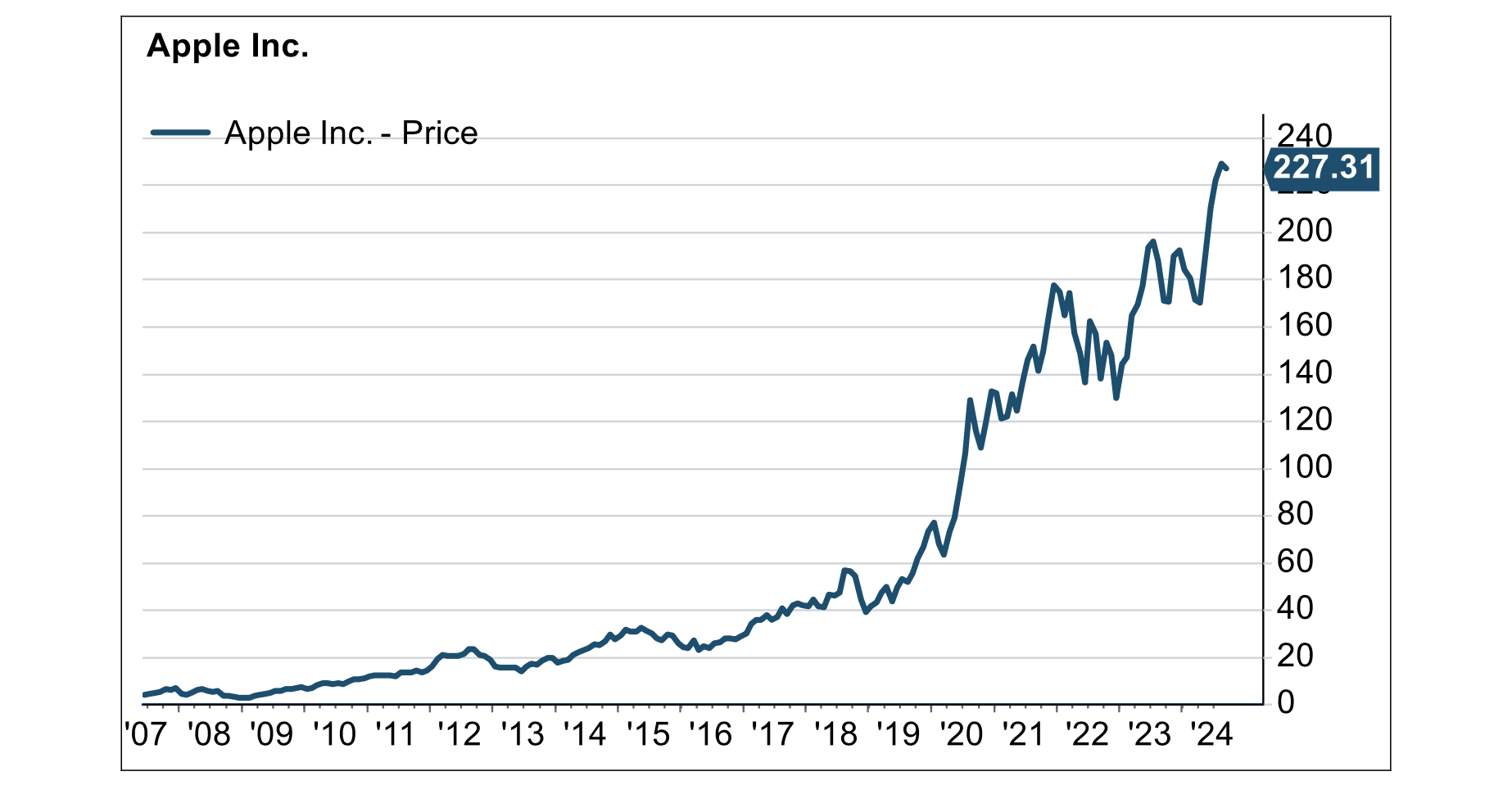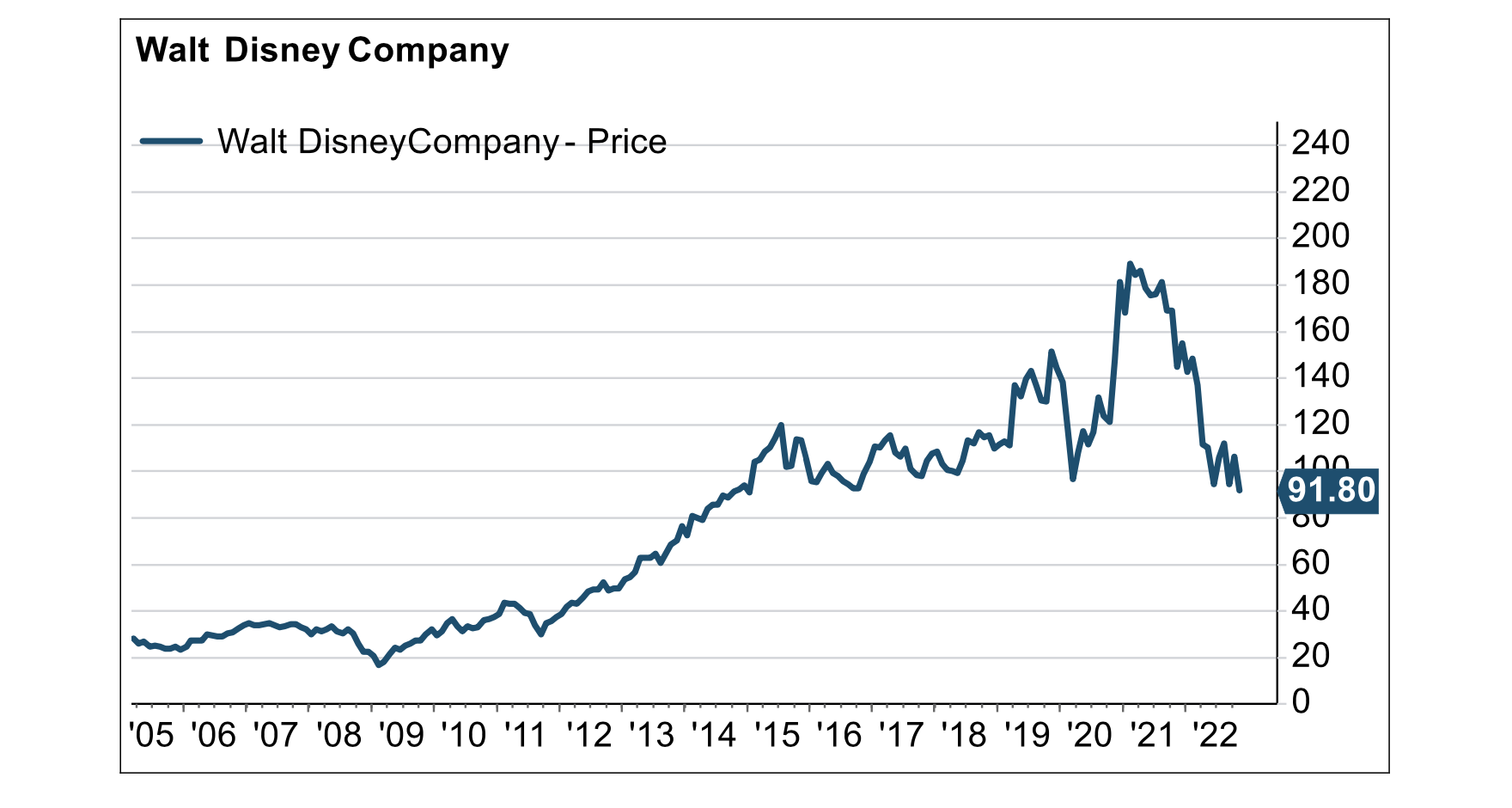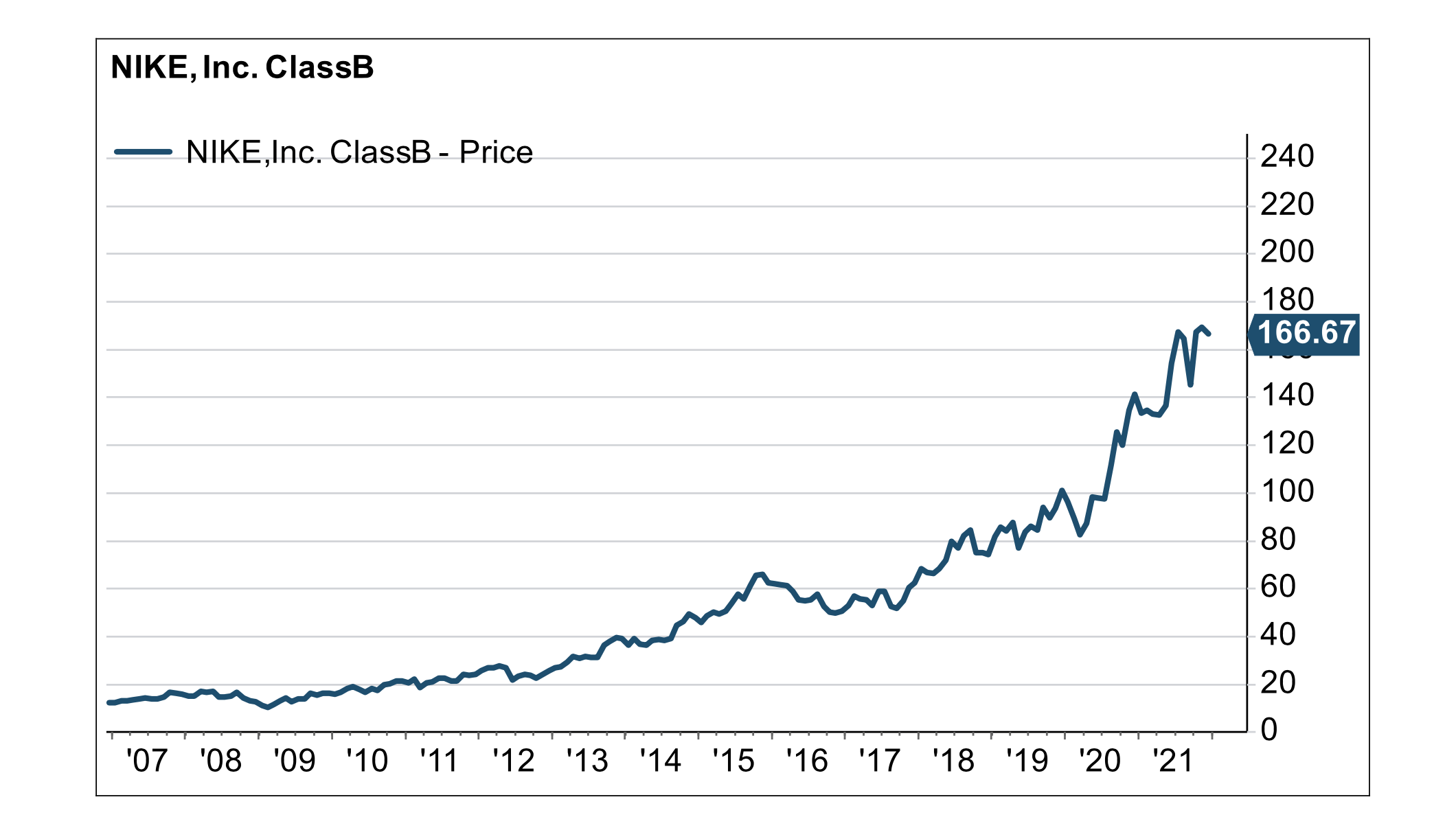Understand you are buying a business, not trading a stock.
 The casual investor tends to focus on the wrong thing when investing. Most will think of the stock as the investment while forgetting the most important part.
The casual investor tends to focus on the wrong thing when investing. Most will think of the stock as the investment while forgetting the most important part.
The most important thing to remember about investing in stocks is that you are not just buying a stock. Rather, with every purchase, you are investing in a business. Investing in businesses and owning companies is at the heart of how we at Whittier Trust think about investing.
Too often, I hear analogies that try to equate investing with throwing darts or, even worse, gambling. If you divorce stock prices from business fundamentals, it is easy to understand how the average person can be confused by short-term volatility. However, conflating short-term price movements as markets digest new information with the odds at a roulette table can lead to suboptimal outcomes. This is one of the reasons we eschew even using gambling terms such as “going all in” or “double down.”
This subtle shift in mindset about owning a business allows us to truly think about the long-term consequences of our decisions and not react to the “daily gyrations of Mr. Market,” as Professor Benjamin Graham famously described the erratic swings of optimism and pessimism.
Owning Stock is Business Ownership
 Thanks to this simple mindset shift, we can begin to do our homework. Understanding a business means understanding how a company actually makes money, so we need to have a very strong understanding of how a dollar of revenue translates into a dollar of profit. This basic act of tracing revenues through the income statement will elicit questions and allow us to understand the fundamentals of how a business operates. Things like margins and how they are impacted by both fixed and variable costs will allow us to understand the health of the business and the dynamics of the industries in which they compete.
Thanks to this simple mindset shift, we can begin to do our homework. Understanding a business means understanding how a company actually makes money, so we need to have a very strong understanding of how a dollar of revenue translates into a dollar of profit. This basic act of tracing revenues through the income statement will elicit questions and allow us to understand the fundamentals of how a business operates. Things like margins and how they are impacted by both fixed and variable costs will allow us to understand the health of the business and the dynamics of the industries in which they compete.
On the other side of the ledger, we also need to focus on how a business and management team has decided to fund operations. Debt levels and borrowings need to be understood and analyzed. People often think of higher debt loads as universally being a bad thing, but for us, debt financing is a function of the certainty and consistency of cash flows. Said another way, if market cycles will dramatically impact cash flows, as is the case with semiconductors, then those companies should have a more appropriate level of debt financing. When thinking about fundamentals, we look for quality companies that have strong operations, and we think about how they will function during different economic cycles.
 Finally—and most importantly—we need to assess the quality of the management team. Quality businesses do not happen accidentally; it’s a consistent and continuous process that allows a culture to take shape. However, this most important component is the most difficult to quantify, and we think this helps give our active approach a very significant edge.
Finally—and most importantly—we need to assess the quality of the management team. Quality businesses do not happen accidentally; it’s a consistent and continuous process that allows a culture to take shape. However, this most important component is the most difficult to quantify, and we think this helps give our active approach a very significant edge.
Exchange-traded funds (ETFs) and mutual funds have their place in the investing universe. However, we at Whittier Trust believe that investing in a company where you can actively analyze long-term viability and the quality of management, rather than blindly investing in a stock, will ultimately lead to a much better outcome. We make it our mission to do that kind of deep due diligence on behalf of our clients, so that our investment strategies are just that—strategic, based on data and our expectations for the future.
So much has been written about investing in stocks, bonds, and a myriad of other asset classes. It seems a new way of increasing wealth is created with each new generation of investors. Yet if you look through so much of the noise and focus on what is actually driving the value of the investment, you can begin to form a track record of success. For us, understanding that a stock price is the outcome of the health of a business has allowed us to focus on creating wealth for the long term.
Written by Teague Sanders, CFA, Senior Vice President and Senior Portfolio Manager at Whittier Trust. Based in our Pasadena office, he is the co-manager of the company’s Small Cap and SMID investment strategies.
If you’re ready to explore how Whittier Trust’s tailored investment strategies can work for you, start a conversation with a Whittier Trust advisor today by visiting our contact page.
From Investments to Family Office to Trustee Services and more, we are your single-source solution.







